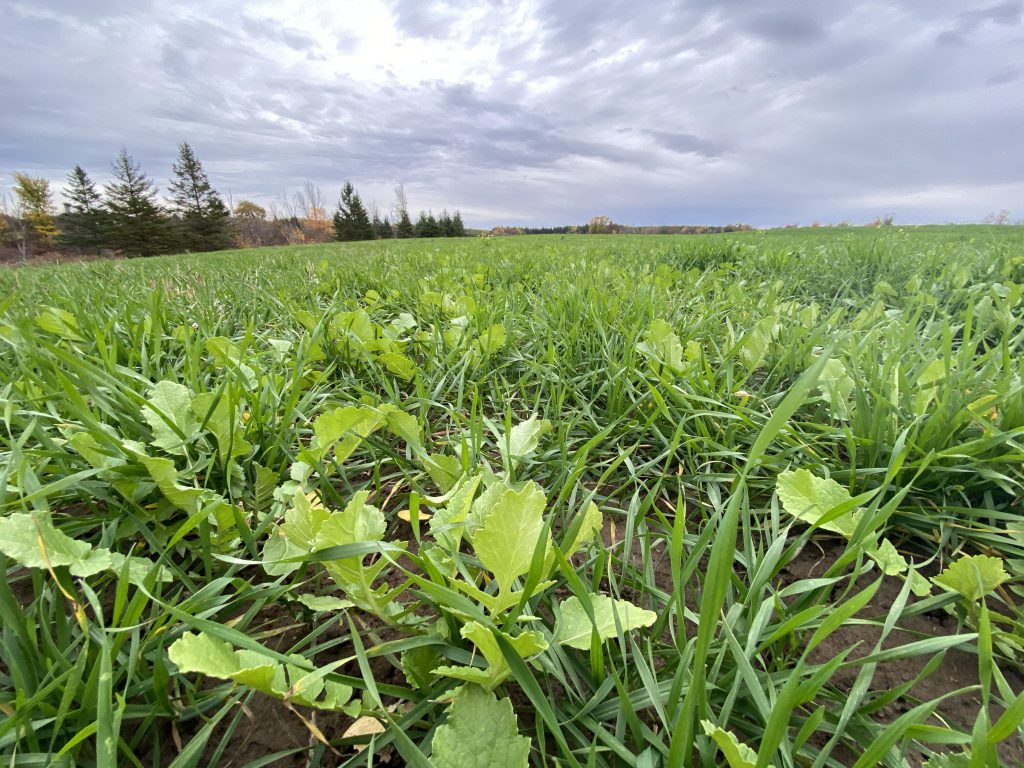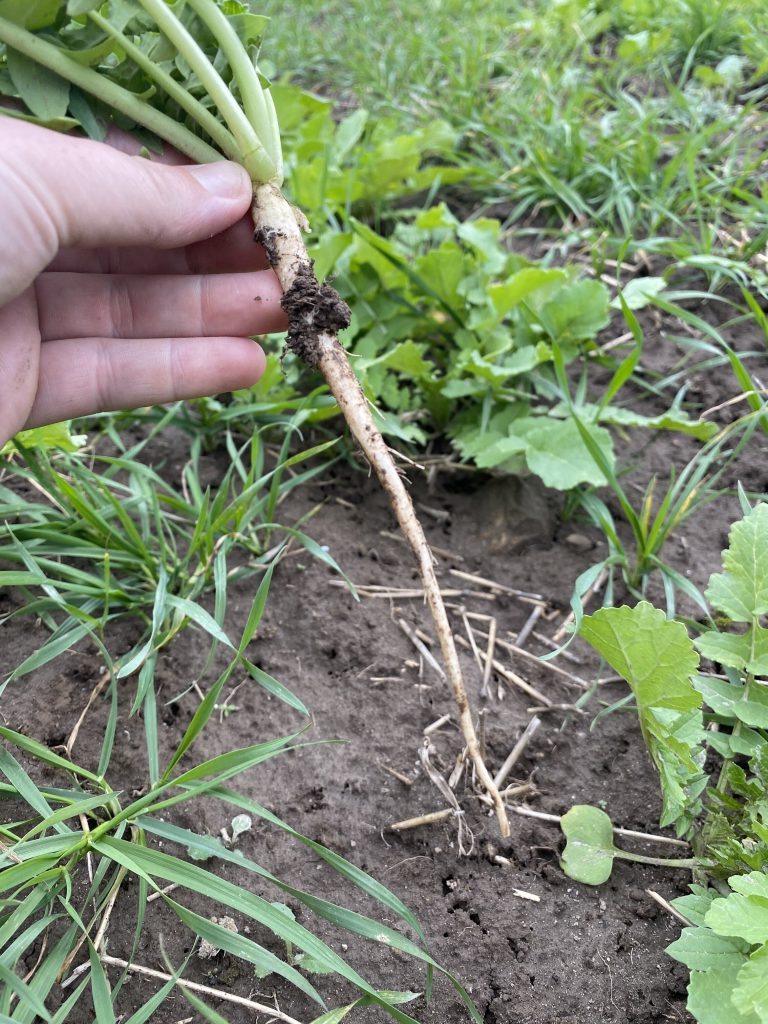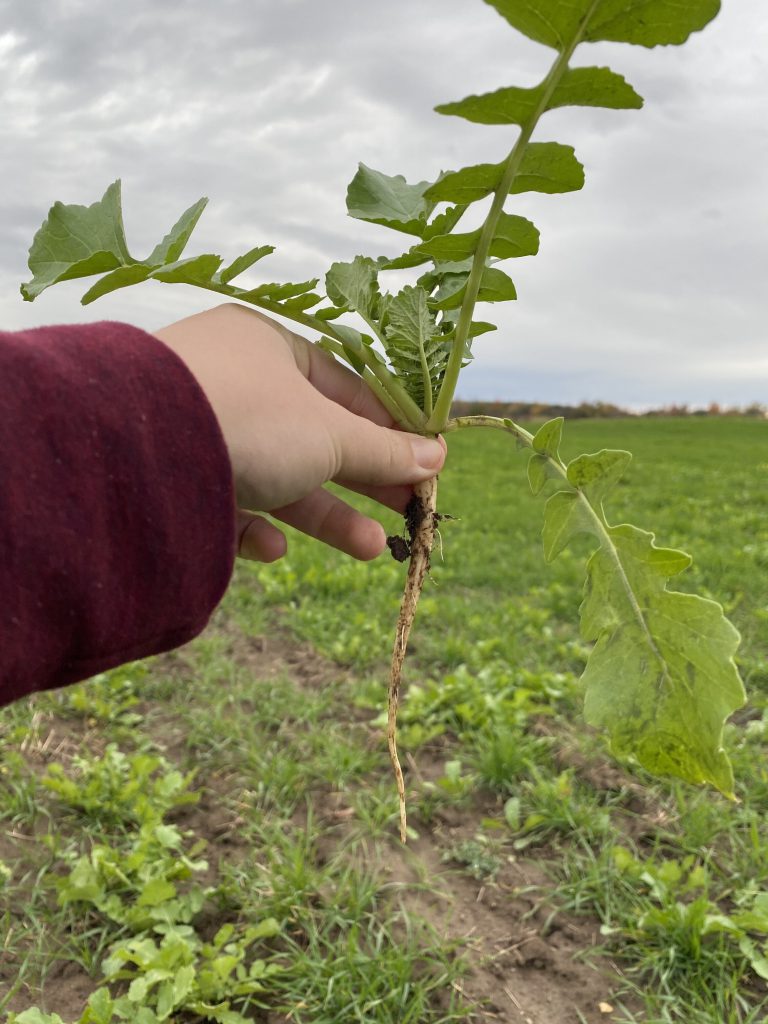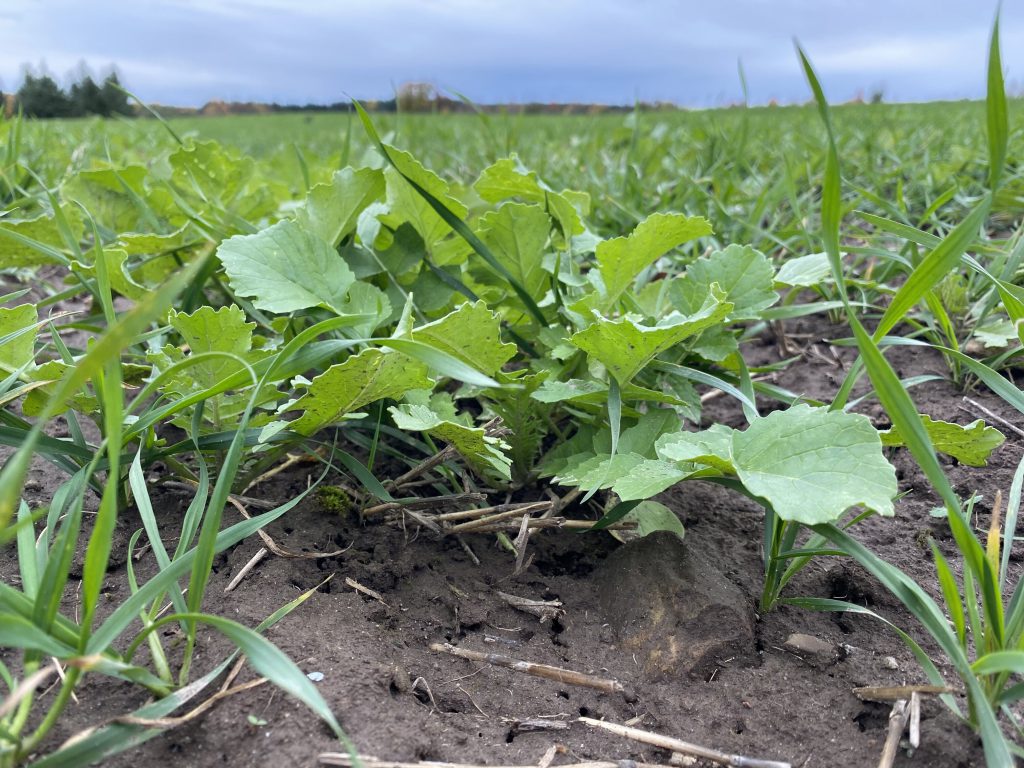One rad cover crop

Do you eat the root vegetable radish? Did you know farmers can plant a radish cover crop, a sustainable practice that protects Ontario soils?
Blog post was written by Brianne Curtis, Communications Coordinator, who farms with her family growing corn, soybeans and wheat outside of Guelph, Ontario.
Radishes are a popular root vegetable that is high in vitamin C, and a tasty veggie that can be eaten in a salad, on a sandwich or raw! And, can also be used a cover crop.
My family decided to plant tillage radish as a cover crop on some of our harvested wheat fields late this summer. Tillage radish can be used as a cover crop because it has a large taproot that can go deep into the soil to break up compaction. Compaction is when the soil layers and particles have been pushed together due to a heavy weight on the surface, lack of roots in the soil and too much surface water.


Till radish tap root after a month after planting. This root will grow into the soil and will develop into the red bulbs we eat!
Compaction concerns
Compaction can be really bad for soils- when the soil layers are pushed together it’s hard for roots to grow through, water to drain through, and can cause nutrients to sit in one area, leaving other parts of the soil areas barren and not fertile. All of this can cause poorly grown grains or sick plants.
One way to fix compaction is heavy tillage, or by breaking part of the soil layers using tillage equipment like ploughs to “dig up” the soil. Another, more sustainable method is by planting cover crops like tillage radish.
Planting a tillage radish can physically open up the soil to allow grain roots to grow through, can allow for water to move through the soil properly and can allow nutrients to consistently spread throughout the soil naturally.
Radish as a cover crop: other benefits
Tillage radish is also very good at gathering and storing nutrients from the soil that future grain crops may need. Next spring, we will plant our grains directly into this cover crop, and naturally have those needed nutrients in the field. This will help us apply fewer fertilizers to our fields.
Planting cover crops is a very popular tactic used by #YourFarmers to keep their soil healthy and fertile. Without healthy soil, we wouldn’t be able to produce healthy crops. And, without healthy crops, there would be no healthy food for you and me to enjoy.
Our plan is next spring when we plant soybeans or corn into this field, it will be a more fertilize and useable field. The soil will be healthier than our job at fixing the compaction problems. Corn roots will be able to grow cleanly through the soil gathering nutrients and water, water will now be able to drain properly through the soil and not sit on the surface, and lastly, there will be a lot of available nutrients ready for the corn to use, in order to grow healthy.
All thanks to One Rad Cover Crop.




